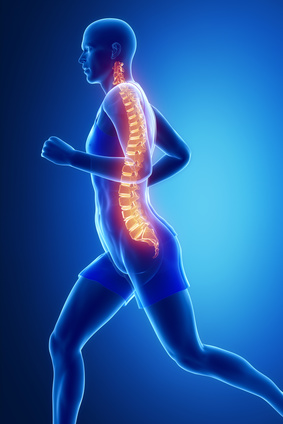-
Runners’ discs were larger and full of more fluid than those who did not run or exercise.
-
There was no difference in disc size between the long-distance and moderate runners.
-
Walking at a brisk pace also contributed to more fluid-filled discs.
Running for Your Back
Running and a healthy back may seem like an unlikely pair. The high impact intensity of pounding the hard pavement feels like it could really do a number on your spine, causing disc and vertebrae misalignment, and generally making your back feel out of whack.
But new research shows the opposite may be true. Running could actually be good for back health.
A recent study published in the journal Scientific Reports evaluated the link between disc health and exercise/movement. They found that people who run or walk (at a brisk pace) regularly have healthier discs in their backs than those who do not exercise at all.
Discs in between the vertebrae of the spine are filled with fluid that absorbs pressure during movement. The more movement your body experiences, the more that fluid builds up and creates a comfortable cushion between vertebrae preventing back pain and tightness. Less movement means less fluid and flatter, deflated discs.
The study examined 79 men and women and assigned them to the following groups: long-distance runners, moderate runners, and those who rarely ran or exercised at all. Participants’ spines were scanned with a specialized MRI system that measured the size and liquidity of each disc.
Here’s what they found:
The results are encouraging for those who regularly run or walk as they may be at less risk for constant back pain as they grow older. The study cautions though that people should not take up running just in an attempt to treat an already existing back condition.
If you experience any frequent back pain, please contact us for an appointment with one of our specialists.



